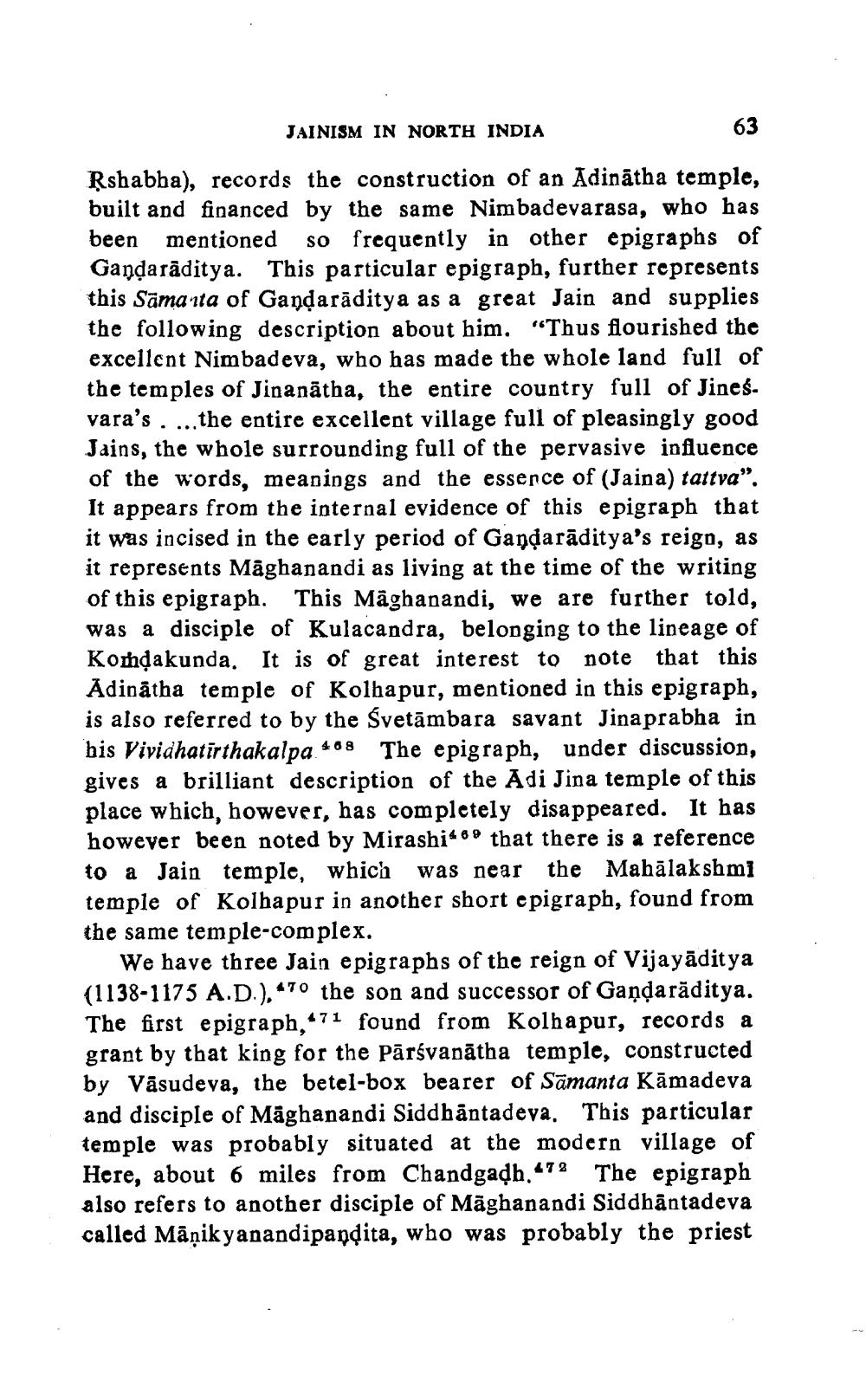________________
JAINISM IN NORTH INDIA
Rshabba), records the construction of an Adinātha temple, built and financed by the same Nimbadevarasa, who has been mentioned so frequently in other epigraphs of Gandarāditya. This particular epigraph, further represents this Samanta of Gandarāditya as a great Jain and supplies the following description about him. "Thus flourished the excellent Nimbadeva, who has made the whole land full of the temples of Jinanātha, the entire country full of Jines. vara's . ... the entire excellent village full of pleasingly good Jains, the whole surrounding full of the pervasive influence of the words, meanings and the essence of (Jaina) tattva". It appears from the internal evidence of this epigraph that it was incised in the early period of Gaņậarāditya's reign, as it represents Maghanandi as living at the time of the writing of this epigraph. This Mäghanandi, we are further told, was a disciple of Kulacandra, belonging to the lineage of Komakunda. It is of great interest to note that this Adinātha temple of Kolhapur, mentioned in this epigraph, is also referred to by the Svetāmbara savant Jinaprabha in bis Vividhatirthakalpa 408 The epigraph, under discussion, gives a brilliant description of the Adi Jina temple of this place which, however, has completely disappeared. It has however been noted by Mirashi"69 that there is a reference to a Jain temple, which was near the Mahālakshmi temple of Kolhapur in another short epigraph, found from the same temple-complex.
We have three Jain epigraphs of the reign of Vijayāditya (1138-1175 A.D.),"70 the son and successor of Gandarāditya. The first epigraph,"71 found from Kolhapur, records a grant by that king for the Pārsvanātha temple, constructed by Väsudeva, the betel-box bearer of Samanta Kāmadeva and disciple of Māghanandi Siddhāntadeva. This particular temple was probably situated at the modern village of Here, about 6 miles from Chandgadh.478 The epigraph also refers to another disciple of Māghanandi Siddhāntadeva called Māņikyanandipandita, who was probably the priest




